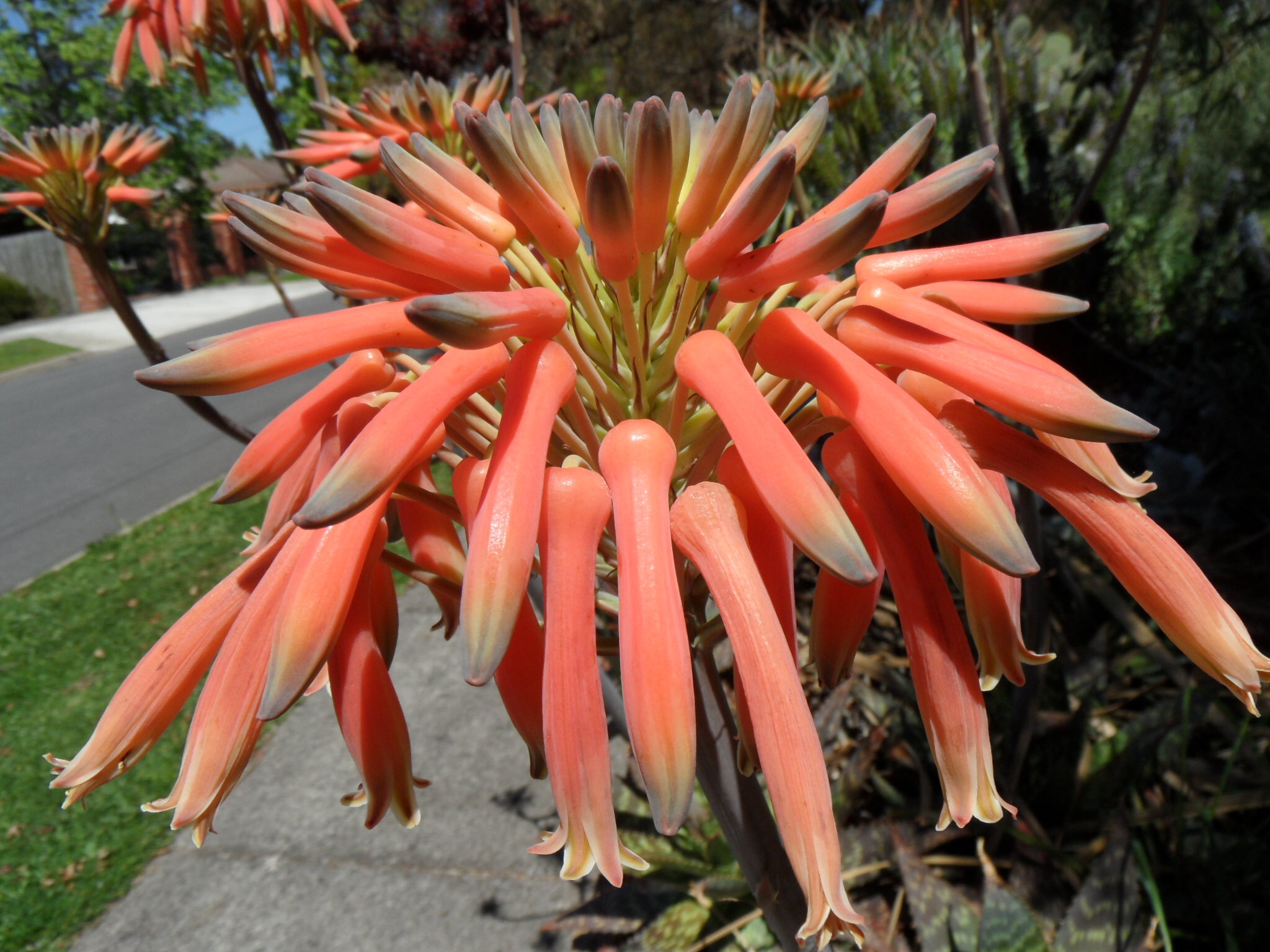
From an old Arabic name, possibly from alloch, referring to the species used medicinally.
Trees, shrubs or herbs, with fleshy, fibrous roots.leaves arranged in rosettes or rarely 2-ranked, the surfaces glabrous or spiny; margins usually dentate or ciliate, rarely entire. Inflorescences thick, branched or simple; racemes condensed to long-cylindrical. Flowers irregular, without a noticeable basal bulge, red to yellow (rarely white). Stamens maturing before the ovary, protruding from the flower when the pollen is shed.
About 13 species are commonly cultivated; however specialist collections may contain over 100 species and numerous cultivars particularly of the miniature species.
Seeds or suckers. Most species are frost intolerant and require warm conditions with good light.
Aloe vera is widely cultivated for use in the cosmetic industry (Kent 1979, Jamieson 1984). Many species are commonly cultivated in gardens and the majority of species are cultivated to some extent by collectors of succulents.
Leaves with marginal teeth; inflorescences thick; perianth without noticeable basal bulge, not two-lipped, red to yellow; stamens exserted (at least on pollen release).
Over 350 species in Africa, Madagascar and the Arabian Peninsula.
Reynolds (1966), Jeppe (1969),West (1974), Kent (1979), Jamieson (1984), Forster & Clifford (1986), Forster (1989), van Wyk & Smith (1996), Forster & Cumming (1998).
Source: (2005). Asphodelaceae. In: . Horticultural Flora of South-eastern Australia. Volume 5. Flowering plants. Monocotyledons. The identification of garden and cultivated plants. University of New South Wales Press.
